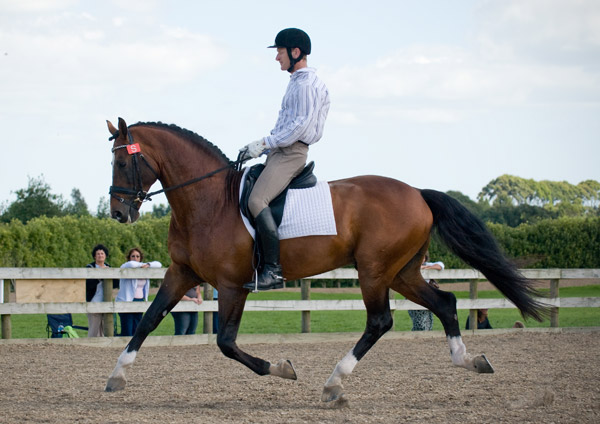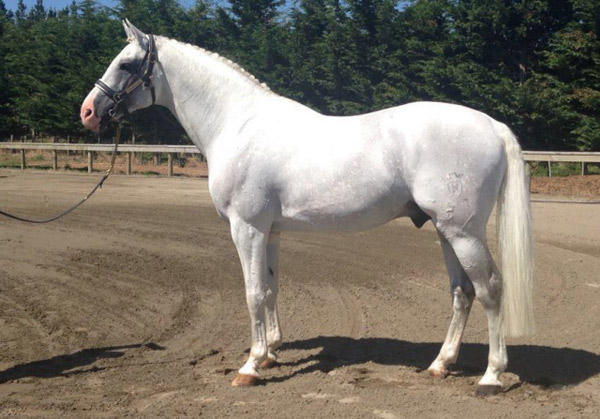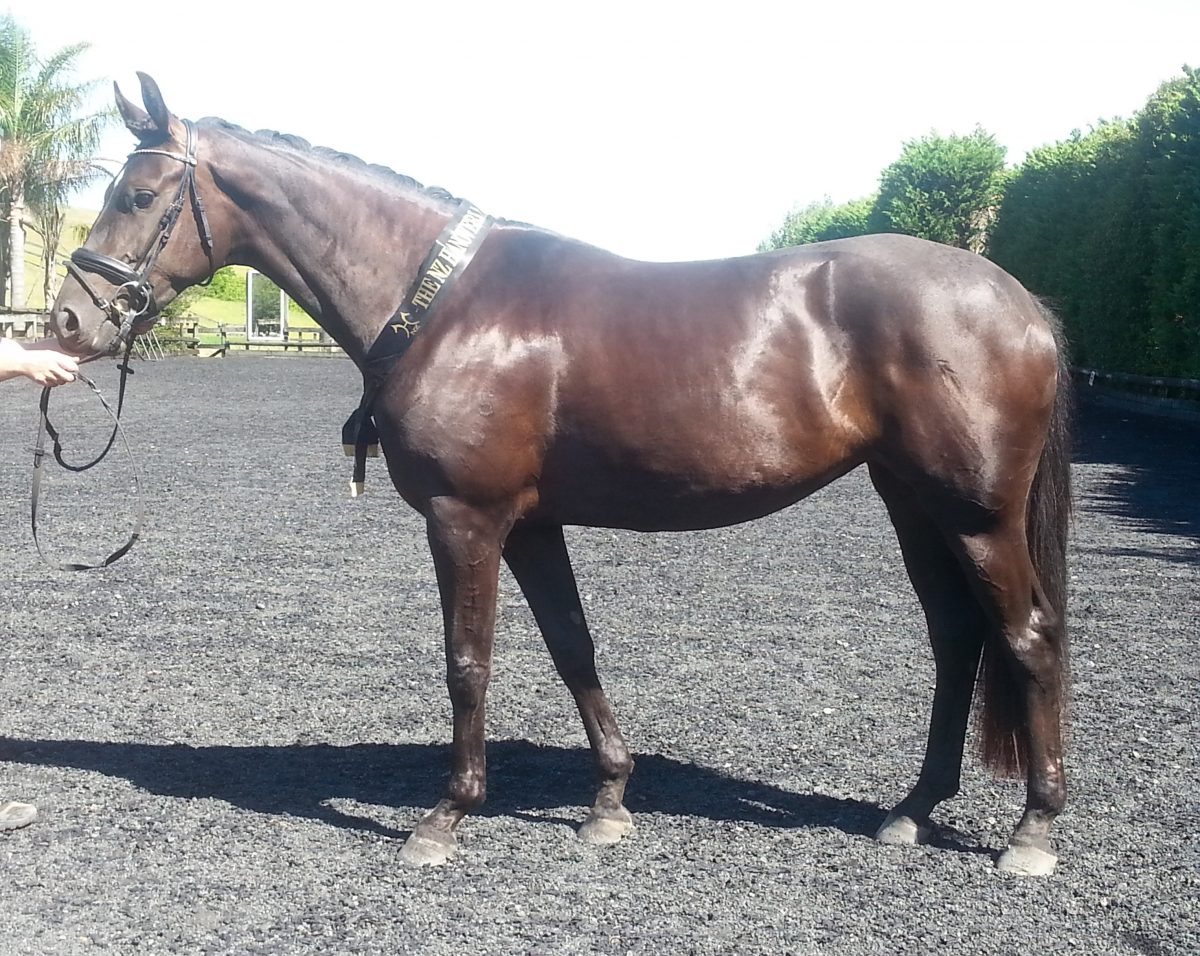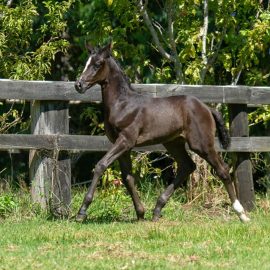
Licensing inspection is the evaluation of the colt or stallion’s breed type, conformation, movement, correctness of gait and jumping ability. A colt that has successfully passed the licensing inspection is still not fully approved for breeding until he has met certain performance criteria.
In New Zealand, a stallion may be licensed provided he fulfills the requirements as described in the NZ Hanoverian Society rulebook.
Requirements for licensing
Identity of the stallion must be verified prior to licensing
Pedigree
- six generations of approved populations
- dam and mother of the dam must be in the main-studbook
- in the case of a Thoroughbred stallion, he must be recognized by the NZ Racing Conference.
Evaluation of type, conformation and gait
- final score of 7, no subscore below 5
- includes free-jumping and canter for stallions before performance testing
Veterinary Examination
- no hereditary diseases
- no defects of genitalia (e.g. cryptochidism, small or unilateral testes)
- no abnormalities of teeth
- no heaves, cribbing, moon blindness, roaring, glanders, mental disorder
- no operations or treatments to correct any defects or deficiencies

The procedure
The main Stallion Licensing and Stallion Sales in Germany is held at the Breed Society headquarters in Verden each year, over a three day period.
When they arrive, the young stallions first undergo a veterinary inspection. Then each horse is presented before a panel of judges and is shown both on a special “walking lane” and on the “triangle”, so that the horse can clearly be seen both approaching and going away from the judges. Marks are given for conformation, presence and masculinity as well as for correctness of paces together with a supple, ground covering stride. A total score of “seven” is required for a stallion to pass.
On the second day the young stallions are lunged and tested in free-jumping, after which they are presented in small groups, at the walk, in the main indoor arena. At this time, the results are announced. This is one of the high spots of the year for breeders, and a real tension crackles round the packed ranks of spectators as the president of the judges stands up to announce the results: “Licensed” or “Not Licensed”! On these simple words hangs the result of over two years work and careful preparation by the colts’ owners: no wonder that the tension is so great!
Of the hundred or so colts sent for Licensing, only about half will pass the judges’ scrutiny. Colts which fail the Licensing are not allowed to stand as stallions. Even so, being very high quality animals, most “not-licensed” colts will have, when gelded, an important future as riding and competition horses.
The third day is the day of the “Stallion Sales”. There are two auctions – one for the licensed stallions and a separate one for those stallions that were not licensed. This is an excellent opportunity to buy a carefully raised performance horse prospect.
For the licensed stallions, the selection process is not yet over. They must pass a stallion performance test, which assesses rideability under saddle, for their progeny to be eligible for Hanoverian registration.



